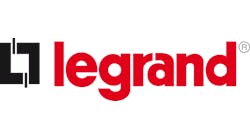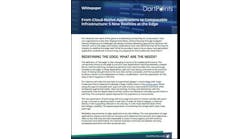Batteries and Cooling Combine for Data Center Sustainability
For data center operators, the challenge of mitigating high temperatures is all too familiar. Critical electronic and electrical components, such as servers and uninterruptible power supply (UPS) systems, generate high amounts of heat, raising the temperature of the rooms they’re housed in. Unfortunately, these high temperatures can result in shortened equipment lifespan, safety issues, and voided product warranties.
Recommended operating temperatures for data center server rooms range from 60 and 82°F (16 to 28°C), with the optimal temperatures for newer servers near the high end of this range. In contrast, lead-acid batteries require a battery temperature of approximately 77°F (25°C), with no potential for reduced cooling levels through higher operating temperatures.
This limitation has become particularly challenging, as the frequency and severity of high temperature weather events has been increasing due to climate change. High temperatures can even result in outages, which can directly cripple various critical operations that rely on the data these facilities manage. As a result, data centers dedicate large amounts of their operating budgets towards facility cooling, and on average, 40% of a data center’s energy consumption goes into powering its cooling and ventilation systems.
Strategies taken by data centers to keep temperatures down include the optimization of cool airflow and the use of liquid cooling. Some data centers operate in low temperature, mountainous regions — such as the Wyoming Hyperscale White Box Aspen Mountain project. The geography of such a data center lends itself to cost effective cooling techniques but is not a universally available solution.
Battery chemistries that allow for higher operating temperatures offer reduced cooling needs, resulting in energy savings. In many cases, the UPS is rated to operate at up to 113°F (45°C), but the battery operating temperature limits the ability to increase temperature and reduce cooling costs in that space. Fortunately, some alternative battery chemistries for UPS systems can tolerate higher temperatures, thus providing an opportunity to reduce cooling costs and improve Power Usage Effectiveness (PUE) and sustainability.
While traditional lead-acid battery solutions often limit temperatures to 77°F (25°C), alternative battery chemistries such as lithium-based and nickel-zinc have a higher ambient operating temperature range – and longer lifespans as well. Modern lithium-based batteries can operate up to 82-86°F (28-30°C). Nickel-zinc batteries offer the highest operating temperatures of popular battery chemistries in the data center market today, with a maximum limit of 95°F (35°C) for regular operation. Some nickel-zinc batteries’ warranty terms even allow for temperature excursions up to 122°F (50°C) for up to 5% of their operating life. This allowance for excursions to high temperatures assures owners that the battery warranty remains valid in the case of a cooling system breakdown and a temporary increase in ambient temperature.
These alternative batteries provide data center operators with the opportunity for increased operating temperature and cooling cost reductions without impacting the UPS. In particular, the higher operating temperature batteries such as nickel-zinc are often the safest, with no risk of thermal runaway. They also can offer additional benefits in terms of reliability and total cost of ownership.
The strategy of operating at higher temperatures with alternative battery powered UPS systems is most effective in prefabricated modular data center systems (PMDCs). In this design approach, prefabricated units are assembled together and outfitted with preselected, preconfigured equipment. A recent survey of 228 data center executives found that over half had already deployed PMDCs, while 99% shared that they have plans to use modular data center designs in the coming years.
As part of the increased use of PMDCs, UPS and battery systems are being positioned in containerized systems outside of the main data center facility. These modular designs pose an opportunity to create climate specific rooms for the UPS and battery systems themselves. By utilizing alternative batteries, these rooms can operate at higher temperatures and offer the combined benefits of lower CapEx for lower capacity cooling systems, and reduced OpEx over the life of the system. As high temperature events increase in frequency due to climate change, investing in battery systems that can withstand harsher environments in 10-15 years is a distinct advantage for facilities being built today.
Temperature flexibility in the battery and UPS space of data centers is an emerging strategy that has become possible thanks to the availability of alternative battery technologies. As these strategies are adopted, data centers can reduce cooling system investments, save on cooling costs over the system’s lifetime, and improve the PUE, sustainability, reliability and safety of their operations.
Steve Jennings is a Sr. Vice President of Sales and Marketing at ZincFive, a leader in innovation and delivery of nickel-zinc batteries and power solutions. Contact them to learn more about their technology leverages the safety and sustainability of nickel-zinc chemistry to provide high power density and performance for mission critical applications.





